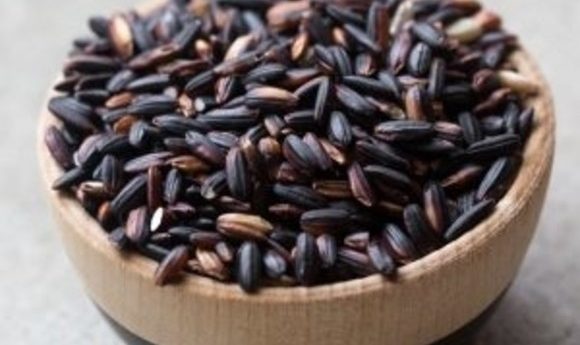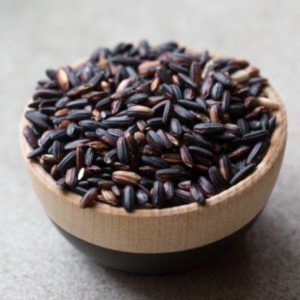Genetically engineered rice: purple plant power

Scientists genetically engineered purple rice. Why?

In the past decade, superfoods such as blueberries, goji berries, pomegranates, and beetroot hit our grocery stores and reached our dinner plates. These foods are rich in antioxidants and may reduce the risk of chronic illnesses, such as heart disease, cancer, and stroke. Now, new research published in Molecular Plant reveals how ordinary brown rice has been genetically engineered to contain superfood antioxidant properties.
Micronutrients are required for both growth and development, and plant phytonutrients are beneficial for human health. Deficiencies in these substances affect more than 2 billion people across the globe, with devastating health effects. To improve health and nutrition worldwide, researchers have developed crops with enhanced micro- and phytonutrient content, such as golden rice, which contains the antioxidant beta-carotene, and purple tomatoes, which carry the purple-pigmented antioxidant anthocyanin.
Rice is a major food crop worldwide, but polishing the grain to improve its taste removes its anthocyanin, along with many other nutrients, leaving only the endosperm. To improve human nutrition, biotechnologists and plant breeders have turned their attention to developing bio-fortified rice.
The underlying biosynthesis pathway for anthocyanin is highly complex, thwarting previous efforts to genetically add it to rice. To overcome this problem, Researchers at South China Agricultural University analyzed sequences of anthocyanin pathways in different rice varieties and identified the genes needed to produce the antioxidant in rice endosperm. They then developed a highly efficient transgene-stacking method for genetic engineering, allowing them to assemble large numbers of genes in single vectors. Using a construct containing eight anthocyanin-related genes driven by endosperm-specific promoters, they then created purple-tinged rice that contained anthocyanin in the endosperm.
The transgene-stacking system is one of the first reported methods for engineering such complex metabolic pathways in plants, and it should be valuable for many synthetic and metabolic engineering applications. This improved tool increases researchers’ ability to improve agronomic traits in plants and develop plant bioreactors to produce other nutrient and medicinal ingredients.





